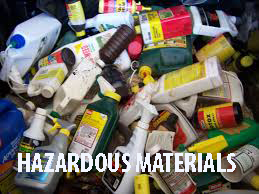The removal process of demolition waste can be a tedious and comprehensive process. A lot of planning and labour hours go into ensuring the demolition waste is properly removed and disposed of. In the instance of hazardous materials, demolition companies have to take extra precautions to safely remove and dispose of this waste. Additionally, most countries, cities and states have rules and regulations for proper removal of hazardous materials. Within these regulations, there are some approved methods for safe removal.
Prior to the removal of hazardous materials, there’s a complex process that must be undertaken to properly identify and dispose of the hazardous waste. These steps are not in exact order, but they similar among major agencies responsible for the regulation of hazardous waste removal.
- Consultation – typically a representative of the agency that regulates hazardous waste removal in your region will come out and discuss the removal process.
- Inspection – after the consultation, or as part of it, the agent will inspect the facility and the materials that need to be removed.
- Overseeing – the agency will continue to monitor the entire process to ensure the safe removal.
- Final Inspection – a representative will make sure that the facility is safe and the hazardous materials have been properly removed, transported and properly disposed of.
Removal Methods of hazardous materials
The removal method of hazardous materials really depends on the type of material. For example, removing asbestos would be different than removing glass or chemicals. There are hundreds of hazardous materials that can be found in a demolition site. The following is the two most common hazardous materials and their recommended way of removal:
Asbestos – Asbestos is the name of a natural mineral that has a high resistance to heat and corrosion. The mineral became a popular source for insulation in the late 19th century due to their ability to keep a room warm and muffle sound. Unfortunately, over the last few decades, asbestos has been found to cause serious health conditions like mesothelioma or lung cancer. That’s why the removal of this material is extremely important.
It’s highly recommended that the removal process of asbestos includes a decontamination area, a quarantined area of the asbestos, a lock chamber, that workers wear full decontamination suits, an air unit is used to control potential dust from the removal, the coverage of any nearby drains and the sealing of any opening of the asbestos area is also completed.
Lead Paint – Lead paint was popular in the late 19th century through the mid 20th century. In fact, it can still be found in numerous historical buildings. Unfortunately, over the last few decades, lead paint has been linked to causing severe damage to your nervous system, cardiovascular system, kidneys, miscarriages and more. That’s why lead paint has become a heavily regulated material in regards to properly removing and disposing of it.
If the percentage of lead content in the paint is more than 1 per cent then the paint should be removed by chemical means to ensure that no fumes or dust kicks up into the air and cause health risks if breathed in. Also, the percentage of lead will determine how to properly dispose of the paint. A similar method is used to remove lead paint as in asbestos except you typically don’t need a decontamination unit, air lock or suits.
The safest way to ensure you are protected from hazardous materials is to let a professional come and check your home or building for asbestos or lead paint so they can remove it safely if found.



